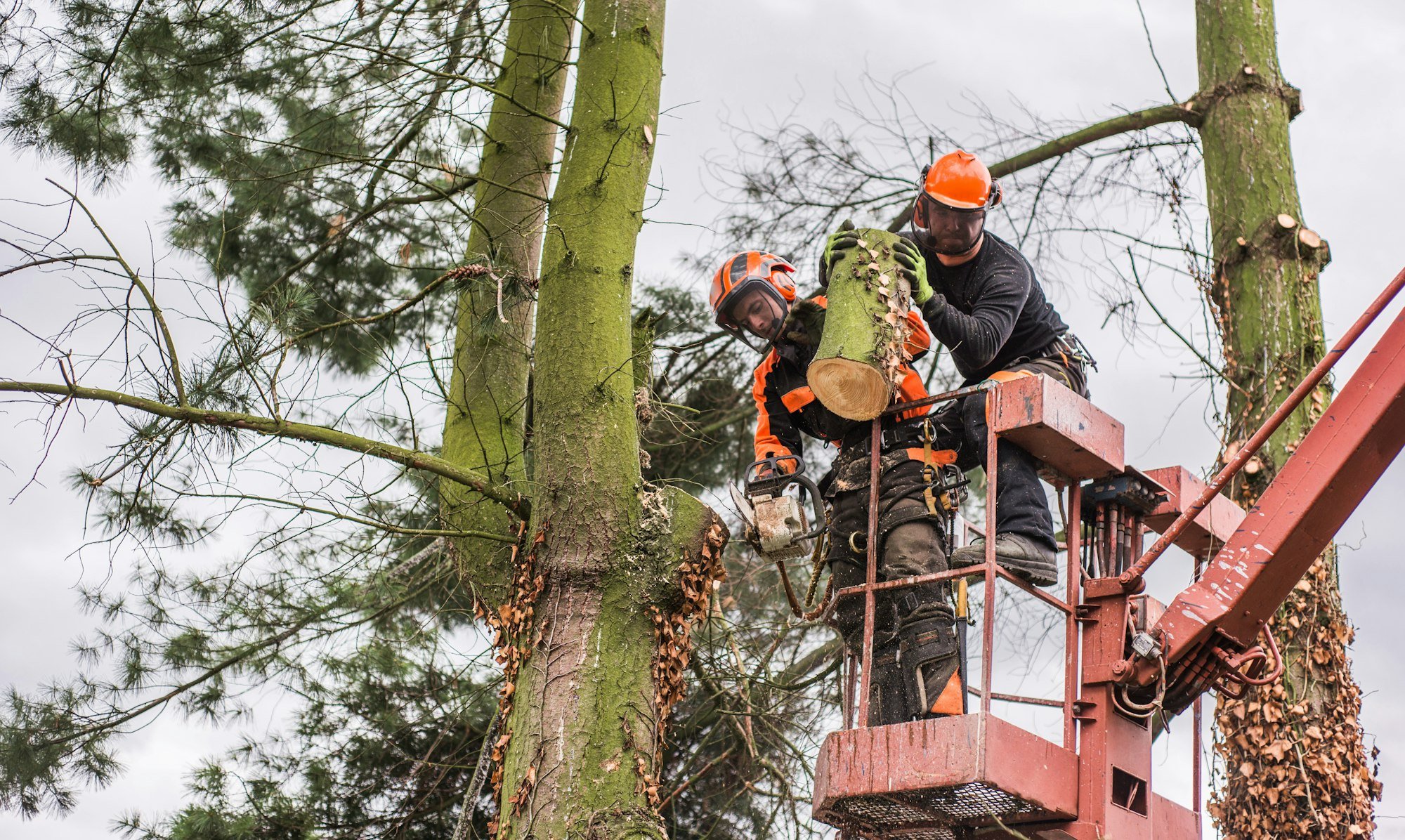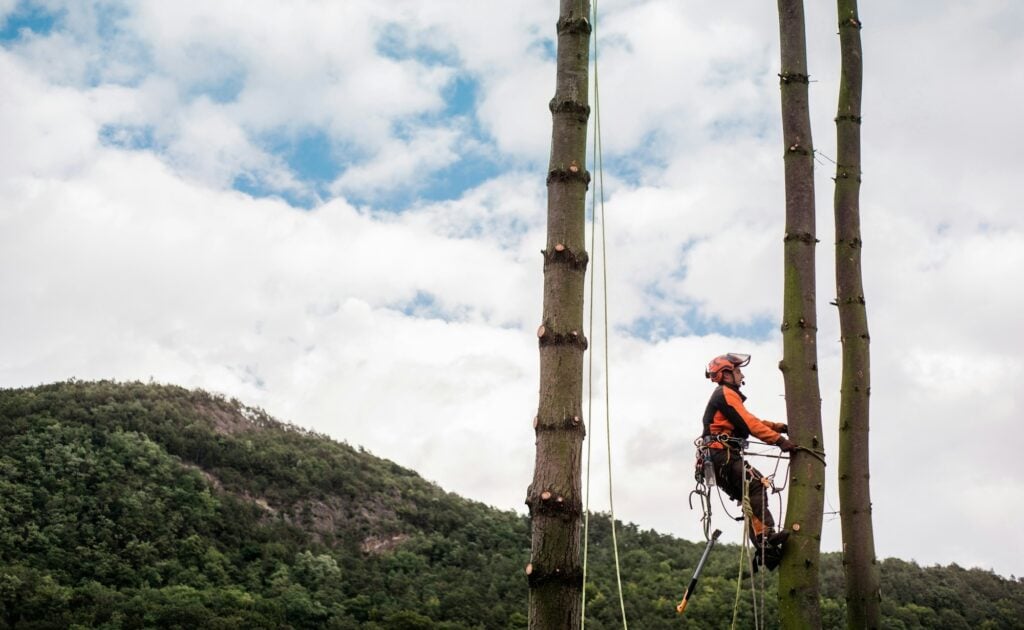Fall Tree Diseases: What to Look Out for This Season
As the vibrant colors of fall start to fill the landscape, it’s easy to overlook the potential threats lurking in your yard. However, this time of year brings the risk of various tree diseases that can seriously impact the health and beauty of your trees. Explore common fall tree diseases to take preventive measures to protect your yard.
Verticillium Wilt
- Verticillium wilt is a fungal tree disease that lives in soil. It infiltrates tree roots and spreads through the tree’s vascular system. This disease is most active during mild spring and early fall temperatures. The symptoms typically become more apparent in late summer and autumn.
Detecting verticillium wilt can be tricky, as its symptoms often resemble those of other tree diseases or stress factors. Parts of the tree show symptoms, while others remain unaffected.
- Affected trees may show wilting, curling, or distorted leaves, which turn yellow or red before browning and falling off.
- Dark streaks or discoloration in the wood.
- Stems and branches begin to die back.
Management
- Unfortunately, there is no cure for verticillium wilt. Prevention is key, as healthy trees are better equipped to resist fungal pathogens. If a tree becomes infected, focus on improving its resilience through proper watering, nutrition, and regular pruning to strengthen its ability to combat the disease.
Powdery Mildew
- Powdery mildew is also a fungal tree disease. It thrives in mild, humid conditions, most commonly during spring and fall. Although it is not fatal, it can severely weaken trees and cause considerable damage to their health and appearance. Typical signs of powdery mildew include small, white or grayish circular spots that look powdery or fuzzy.
The spots often resemble flour or baby powder. These spots usually start on lower leaves, stems, or buds before spreading to the upper surfaces, where they are most noticeable. As the infection worsens, trees may weaken, with leaves turning yellow or brown, drying out, curling, and becoming distorted.
Management
- Regularly remove fallen leaves and debris where the fungus may overwinter.
- Keep your landscape tidy and your trees properly pruned to prevent the spread of the disease.
- Opt for selective pruning to increase airflow and sunlight penetration to reduce mildew growth.
Tubakia Leaf Spot
- This fungal disease mainly affects newly planted trees and oak trees under stress or suffering from nutrient deficiencies, such as iron chlorosis. Tubakia leaf spots become most severe in late summer and early fall, especially during wet conditions. The fungus survives over the winter in affected leaves and twigs, with spores spreading through wind and rain in the spring.
Tubakia leaf spot causes dark to reddish-brown circular spots on leaves, typically 1/4 to 1/2 inches in diameter. A yellow chlorotic ring often surrounds these spots and may merge to form larger, irregular blotches. In severe cases, the disease can cause premature leaf drop.
Management
- Identify and address the underlying stressors that weaken the tree.
- Improve soil nutrition to reduce tree stress and correct these conditions.
- Prune trees to increase airflow can also lower the risk of infection.
- Collect and destroy infected leaves to prevent the fungus from spreading.
Hire Tree Care Specialists In Montclair
- Hire expert tree care specialists in Montclair to accurately diagnose tree diseases and create a comprehensive maintenance plan that ensures the health and longevity of your trees. Certified arborists provide a range of services, including tree nutrition, trimming and pruning, and tree removal, tailored to protect and preserve your landscape all year round.
At American Tree Experts, Inc., we offer the best tree care services to keep your plants out of harm’s way. Our pest management services ensure your plants are protected against pests and diseases. Our most sought-after services are pruning, bracing, pest, and nutritional management. We offer services in Montclair, New Jersey. Call us at (973) 744-6091 for a free quote.













 Be mindful of the potential mess from fruit, sap, or needles. A fruit tree near a sidewalk will require regular cleanup, and a pine tree near a driveway can cover your car in sap at certain times of the year.
Be mindful of the potential mess from fruit, sap, or needles. A fruit tree near a sidewalk will require regular cleanup, and a pine tree near a driveway can cover your car in sap at certain times of the year.
 Tree risk assessment provides several key benefits:
Tree risk assessment provides several key benefits:


 Regularly inspect your trees for signs of tree-damaging pests, which can hide among leaves, branches, and the trunk. Check for discolored leaves and examine tree trunks for holes or frass. Promptly addressing issues can prevent infestations from spreading. If you notice a branch infested with beetles or other pests, remove it promptly to mitigate further damage. Familiarizing yourself with these signs can reduce future maintenance.
Regularly inspect your trees for signs of tree-damaging pests, which can hide among leaves, branches, and the trunk. Check for discolored leaves and examine tree trunks for holes or frass. Promptly addressing issues can prevent infestations from spreading. If you notice a branch infested with beetles or other pests, remove it promptly to mitigate further damage. Familiarizing yourself with these signs can reduce future maintenance.